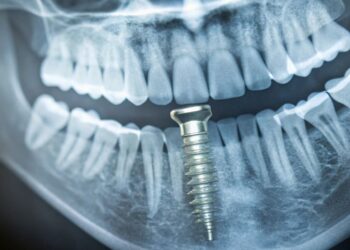Crohn’s disease can be tricky to spot early, since its initial symptoms often look like common stomach issues such as diarrhea, mild stomach pain, or bloating. These signs may develop slowly, making it easy to mistake them for less serious problems. The early symptoms of Crohn’s disease usually start with subtle changes like increased bowel movements, mild cramping, and a drop in appetite.
Sometimes, these symptoms come and go, with periods of no symptoms at all. As the condition progresses, a person might also notice fatigue or unexplained weight loss, which can be easy to overlook at first. For those curious about their own symptoms, a free Crohn’s disease test for self-assessment can be a helpful first step before speaking to a doctor.
Understanding Early Symptoms of Crohn’s Disease
Early signs can show up in different ways, both in the digestive tract and in other parts of the body. Symptoms often begin mildly but can change over time or become more noticeable.
Common Gastrointestinal Symptoms
Digestive symptoms are the most common first signs. These may include constant stomach pain or cramping, which often happens after meals. Loose or watery stools, sometimes with an urgent need to go, can appear early and may become frequent.
Some people notice a change in their normal bowel habits, with diarrhea that comes and goes for weeks. Occasional blood or mucus in the stool might also occur, though not everyone experiences this.
Bloating, feeling gassy, and a loss of appetite may make people eat less or lose weight without trying. This can result in lower energy or tiredness. Even in the beginning, symptoms may get worse for a few days, improve, and then return.
Subtle Non-Digestive Signs
Not all early effects are directly linked to the gut. Some notice tiredness that does not go away with rest. Weight loss can happen even if they are not dieting. Youth and children may have slowed growth or not gain weight as expected.
Fever and night sweats, though less common, can be a sign of inflammation in the body. Some may feel joint pain or discomfort, even without obvious swelling. Small, red bumps or sores can sometimes appear on the skin, mainly on the legs.
Eye redness or pain is rare but may happen early. Mouth sores or ulcers, which come and go, are another sign that can be overlooked or mistaken for other causes.
Patterns and Onset of Initial Flare-Ups
Early flare-ups can start slowly, building over weeks or months. Sometimes, symptoms appear suddenly and feel severe from the start. In some individuals, only certain parts of the digestive tract are affected, so not every symptom shows up at once.
People may have periods where symptoms fade and then return. Triggers like stress, infections, or certain foods can make the first flare worse. Flare-ups might follow a cycle, with symptoms sometimes disappearing for weeks at a time.
Tracking when each symptom appears and what makes it better or worse can help in spotting patterns. Early recognition allows for earlier discussion with a healthcare provider and helps avoid delays in finding the right care.
Differentiating Early Crohn’s Symptoms From Other Conditions
Early symptoms of Crohn’s disease often look similar to other digestive problems. Knowing how to spot the differences and when a doctor’s visit is needed can help prevent confusion and delays in care.
Key Differences From Similar Digestive Disorders
Crohn’s disease can cause diarrhea, stomach pain, and fatigue. These symptoms are also common in other digestive problems, such as irritable bowel syndrome (IBS) or food intolerances.
However, Crohn’s disease more often includes persistent diarrhea, weight loss, less appetite, and sometimes blood in the stool. These problems may not go away with simple home care.
Other signs that set Crohn’s apart are mouth sores, pain near the anus, and growth delays in children. Unlike conditions that come and go quickly, Crohn’s flare-ups can last for weeks or longer. Stress or certain foods rarely cause symptoms alone.
When to Seek Medical Evaluation
A person should see a doctor if they notice ongoing diarrhea lasting more than a few days, frequent stomach pain, or unexplained weight loss. Blood in the stool, fever, or severe fatigue are also warning signs.
Children may show slower growth or fall below normal weight for their age. Adults may feel very tired even after resting or may lose their appetite for long periods. If symptoms don’t improve or get worse over time, it’s important to get checked by a healthcare provider.
If pain becomes severe or there is a sudden high fever, immediate medical help should be sought. Early discovery helps manage symptoms and can prevent future problems.
Conclusion
Early symptoms of Crohn’s disease often begin gradually and may be easy to overlook. Common signs can include stomach pain, diarrhea, frequent bowel movements, and weight loss. Sometimes these symptoms are mild, but can become more noticeable over time.
Recognizing these early changes can help people seek medical care sooner. Paying attention to changes in digestion and overall health may support better management of the condition.















Discussion about this post